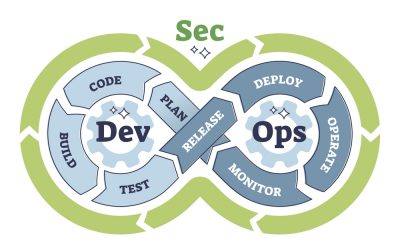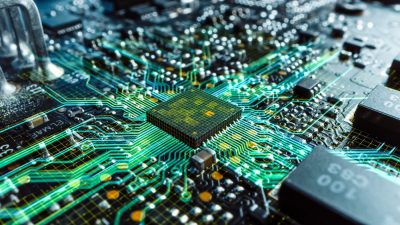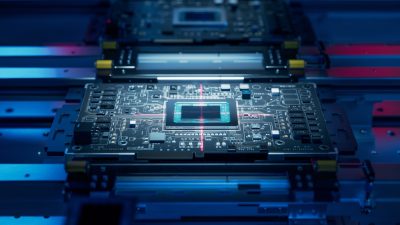Highlights:
- Despite having only 87% of its computing nodes operational throughout the test, Aurora managed to reach a new record-breaking 10.6 exaflops of performance.
- The primary performance test of TOP500 uses the HLP benchmark to compare supercomputers.
The U.S. Energy Department’s supercomputer Aurora achieves highest score again in a closely evaluated AI performance test.
The TOP500 supercomputing group conducted the speed evaluation and released its results recently. In addition to testing Aurora’s performance with AI applications, the team evaluated it with other workloads. After Frontier, another supercomputer from the Energy Department, it was found that the system is the second fastest overall.
Each of Aurora’s 166 refrigerator-sized cabinets can accommodate 64 compute units. Eight Intel Corp. chips—six graphics processing units supported by two central processing units—are included in each 70-pound compute module. Although the gear for Aurora was put together last year, the supercomputer is still not up and running.
TOP500 used the HPL-MxP benchmark to assess the AI performance of the system. It gauges the speed at which supercomputers process floating point numbers, a type of data widely employed in artificial intelligence models and well-suited for encoding lengthy fractions. Despite having only 87% of its computing nodes operational throughout the test, Aurora managed to reach a new record-breaking 10.6 exaflops of performance.
With 10.2 exaflops, Frontier, the other exascale machine operated by the Energy Department, came in second. However, it continued to hold the title of fastest supercomputer overall.
The primary performance test of TOP500 uses the HLP benchmark to compare supercomputers. It calculates their speed by examining how quickly the evaluated systems can solve linear equation problems. Aurora managed 1.012 exaflops, whereas Frontier scored 1.206 exaflops on the HLP scale.
Hewlett Packard Enterprise Co. built both supercomputers for the Energy Department. However, Frontier is powered by Advanced Micro Devices Inc. processors, while Aurora uses silicon from Intel. In the latter system, 9,400 servers are housed in 74 cabinets, each with one CPU and four AI accelerators.
Once it becomes completely operational, Aurora can potentially make it to the first position from Frontier to Top500’s flagship HLP ranking. The spokesperson of Intel reported to Tom’s Hardware that “there’s a contractual target number that is faster than Frontier. So, if we’re successful in reaching that number, we’ll be faster than Frontier.”
The three systems occupying the following three positions on the current TOP500 rating are the same ones that completed the top five list in November last year during the final round of benchmark tests.
Eagle, an AI-optimized system that Microsoft Corp. integrated into its Azure cloud platform last year, is currently the third-fastest supercomputer in the world, behind Frontier and Aurora. Intel CPUs and Nvidia Corp. H100 graphics cards power it. The Arm-based Fugaku supercomputer, housed at the Riken Center for Computational Science in Japan, took fourth place, while the LUMI system from Finland completed the top five.

















